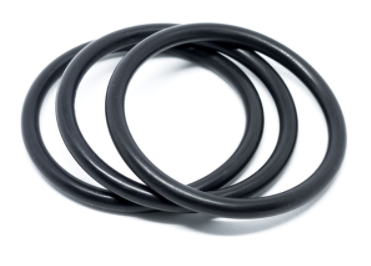By Contributing Author
Seals and o-rings come in a range of different materials and can be used in a variety of applications. These basic, round components may appear simplistic, but in reality, they have a big role to play. The right o-rings and seals can prevent leaks of fluids or gases, making them a cost-effective and efficient way to maximize productivity.
Some common uses for o-rings include beverage containers, plumbing work, medical devices and automotive parts. In other intensive industries where equipment such as steam or gas turbines and industrial exhaust systems are used, seals need to be able to face a unique set of challenges.
Not all Materials Can Withstand High Heat
When choosing the best seals for the job, it is important to understand the unique stressors these components will face to determine their effectiveness. For example, nitrile o-rings are common, as they are a versatile seal. However, they aren’t suitable for use at high temperatures.
Even if the material can withstand high temperatures, it doesn’t mean it will necessarily be the right choice. Friction, chemicals and compression can cause damage to certain o-rings and seals. It is also recommended you choose a local manufacturer, as often cheap imports will not meet the same performance standards and can falter in high-heat settings.
Comparing O-Rings and Seals
In some settings, temperatures can reach over 400 degrees F. O-rings and seals need to be reliable and resistant to this extreme heat. Viton Fluorocarbon is a popular choice for aircraft engines and automative purposes, as o-rings made from this material are incredibly tolerant. As a universal product, Viton fluorocarbon has a temperature range of up to +446°F. Standard compounds can withstand low temperatures down to -13°F, while special compounds can be used down to -40° F.
Choosing a grade with high fluorine will give you the benefit of a tight, vacuum seal, and resistance to high-octane swell and oxygenated fuel blends; for example, Ethanol and Methanol blends. Other grades can be more effective with amine-based oil protectants. There are some limitations as Viton fluorocarbon is not recommended for ketones, nitro hydrocarbons and chlorosulfonic acids. However, for most high-heat settings, this will be the first choice when choosing seals and o-rings.
As a comparison, Neoprene (chloroprene) is only suitable for dry heat, with a temperature range of up to +250°F. The special compound will still be effective down to -67°F, and the standard down to -40°F. While it is used widely in refrigerators due to its resistance to ammonia, it would not stand up to the demands of automotive or aviation purposes.
The Challenges of High-Heat Sealing
Seals and o-rings are common components, and almost every industry has some use for them. However, not all materials are the same, and some will not be able to withstand the pressures of high-heat sealing. Chemicals, pressure and temperatures over 400°F can place significant pressure on seals, and failures could result in damage to expensive machinery.
Viton fluorocarbon is widely used in the automotive and aviation industries due to its ability to withstand extreme heat and a range of fluids. While it does have some limitations when compared to other materials, the benefits in these settings are clear.



